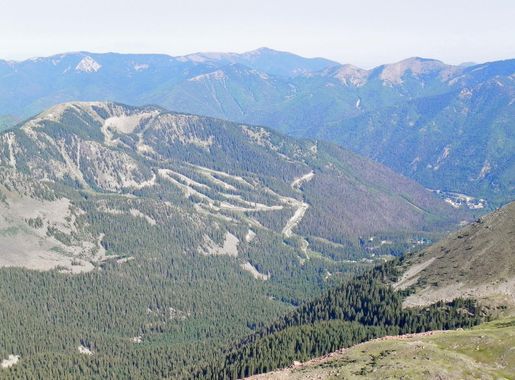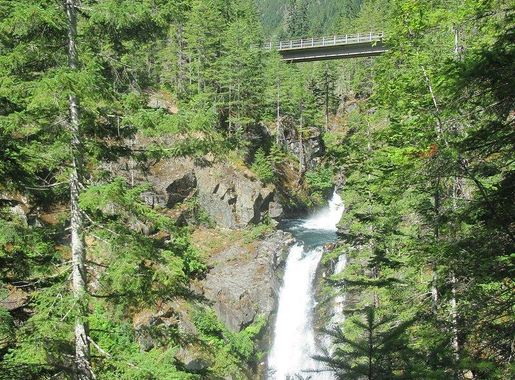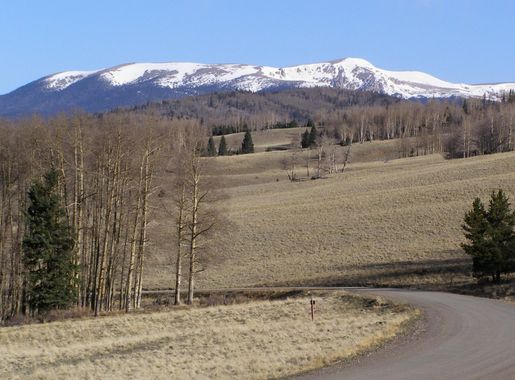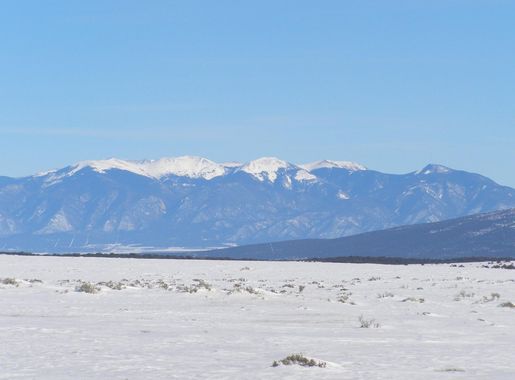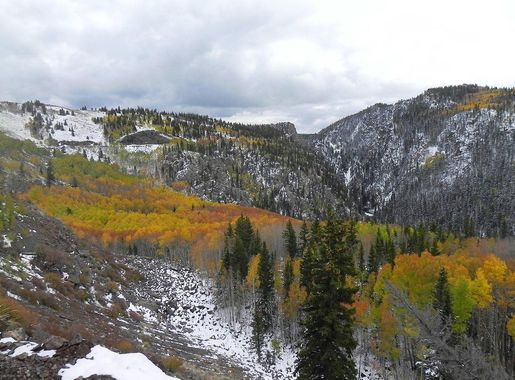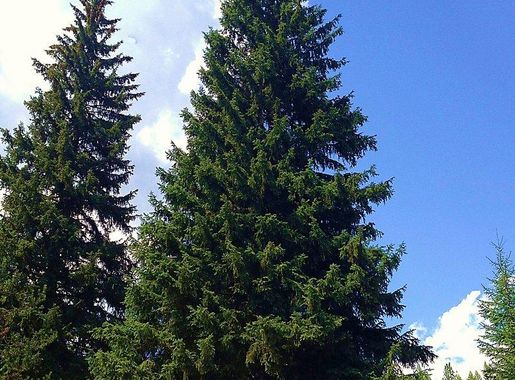
The Serene Wilderness of Carson National Forest
Discover Carson National Forest: A New Mexico Gem with Scenic Trails, Majestic Peaks, and Abundant Wildlife, Perfect for Hiking, Fishing, and Winter Sports.
Carson National Forest, located in the heart of northern New Mexico, offers a breathtaking escape into nature. Covering over 1.5 million acres, this expansive forest is a haven for outdoor enthusiasts. From its lush green meadows to its towering pine trees, the forest provides a diverse range of landscapes to explore. The forest is home to Wheeler Peak, the highest point in New Mexico, standing at 13,161 feet. Hiking to the summit rewards you with panoramic views of the surrounding wilderness. For those seeking a more relaxed experience, the forest's numerous trails cater to all levels of hikers. Fishing enthusiasts can enjoy the many streams and lakes, teeming with trout and other fish. In the winter, Carson National Forest transforms into a snowy wonderland. Skiing and snowboarding are popular activities, with several resorts nearby offering excellent slopes. Wildlife lovers will find an abundance of animals, including elk, deer, and black bears, making it a perfect destination for nature photography. Whether you're looking for adventure or tranquility, Carson National Forest has something to offer every visitor.
Local tips in Carson National Forest
- Visit in the fall for stunning foliage and fewer crowds.
- Check local guidelines for camping permits and fire restrictions.
- Bring plenty of water and sun protection, as some trails are exposed.
- Winter visitors should carry chains or have a 4WD vehicle for snowy conditions.
- Respect wildlife and maintain a safe distance at all times.
The Serene Wilderness of Carson National Forest
Carson National Forest, located in the heart of northern New Mexico, offers a breathtaking escape into nature. Covering over 1.5 million acres, this expansive forest is a haven for outdoor enthusiasts. From its lush green meadows to its towering pine trees, the forest provides a diverse range of landscapes to explore. The forest is home to Wheeler Peak, the highest point in New Mexico, standing at 13,161 feet. Hiking to the summit rewards you with panoramic views of the surrounding wilderness. For those seeking a more relaxed experience, the forest's numerous trails cater to all levels of hikers. Fishing enthusiasts can enjoy the many streams and lakes, teeming with trout and other fish. In the winter, Carson National Forest transforms into a snowy wonderland. Skiing and snowboarding are popular activities, with several resorts nearby offering excellent slopes. Wildlife lovers will find an abundance of animals, including elk, deer, and black bears, making it a perfect destination for nature photography. Whether you're looking for adventure or tranquility, Carson National Forest has something to offer every visitor.
When is the best time to go to Carson National Forest?
Iconic landmarks you can’t miss
White Sands National Park
Explore the breathtaking landscapes of White Sands National Park, a unique natural wonder filled with stunning white gypsum dunes and rich wildlife.
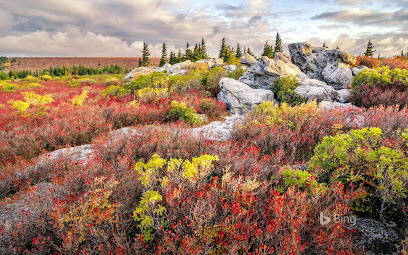
Carlsbad Caverns National Park
Explore the breathtaking beauty of Carlsbad Caverns National Park, a UNESCO World Heritage site filled with stunning caves and diverse wildlife.
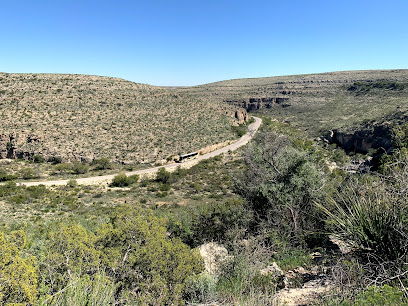
Bandelier National Monument
Explore the ancient cliff dwellings and stunning landscapes of Bandelier National Monument in New Mexico, a must-visit for history and nature lovers alike.
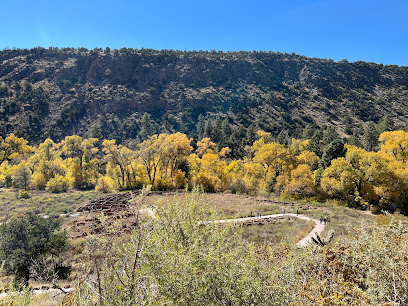
Kasha-Katuwe Tent Rocks National Monument
Explore Kasha-Katuwe Tent Rocks National Monument, a stunning natural wonder in New Mexico with unique rock formations and breathtaking hiking trails.
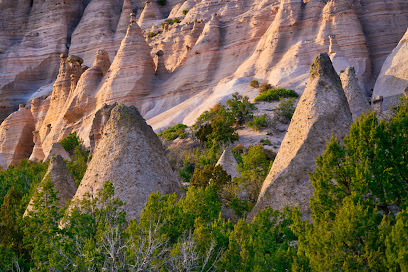
Bandelier National Monument Visitor Center
Explore the rich history and stunning landscapes at Bandelier National Monument Visitor Center, the gateway to New Mexico's ancient cliff dwellings.
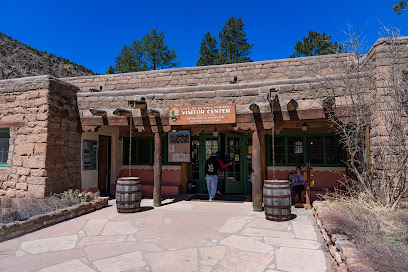
Río Grande del Norte National Monument
Discover the stunning landscapes, rich history, and outdoor adventures at Río Grande del Norte National Monument in New Mexico.
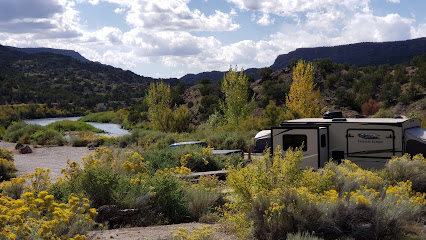
Valles Caldera National Preserve
Experience the stunning landscapes and diverse wildlife of Valles Caldera National Preserve, a natural treasure in New Mexico's scenic wilderness.
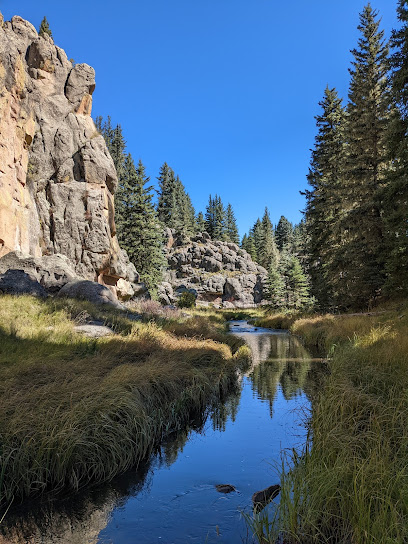
Gila Cliff Dwellings National Monument
Discover the ancient cliff dwellings and stunning landscapes at Gila Cliff Dwellings National Monument, a must-see for nature lovers and history enthusiasts.
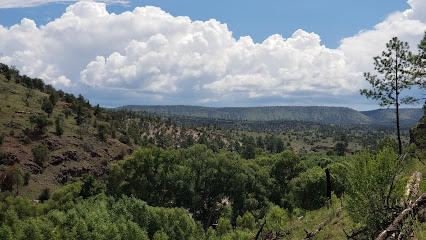
Cimarron Canyon State Park
Explore the breathtaking beauty of Cimarron Canyon State Park in New Mexico, a paradise for outdoor enthusiasts and nature lovers alike.
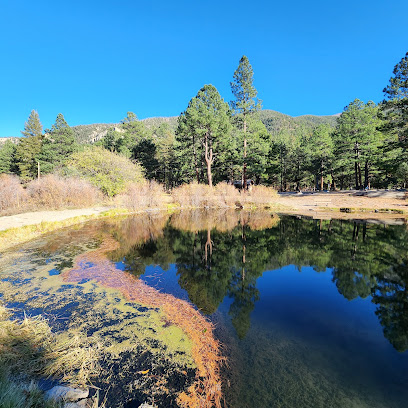
Sky City Cultural Center & Haak'u Museum
Explore the rich heritage of the Acoma Pueblo at the Sky City Cultural Center & Haak'u Museum, a must-visit destination for cultural enthusiasts.
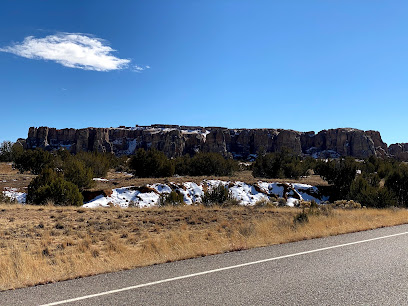
Lincoln Historic Site
Explore the Lincoln Historic Site, a captivating museum that brings the Wild West's legendary stories and historical figures to life in Lincoln, New Mexico.
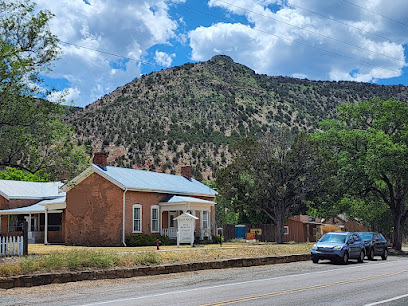
Kit Carson Park
Explore the natural beauty and historical significance of Kit Carson Park in Taos, New Mexico—an oasis of serenity and cultural heritage.
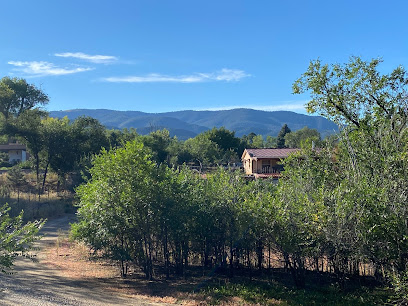
Jemez Historic Site
Explore the Jemez Historic Site, where history and natural beauty intertwine in the heart of New Mexico's cultural landscape.
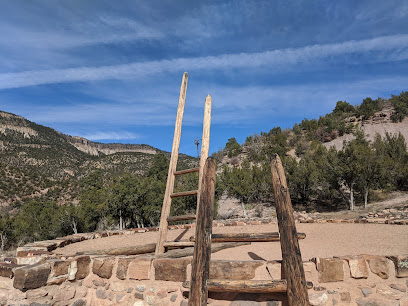
Puye Cliff Dwellings
Explore the ancient cliff dwellings of the Ancestral Puebloans in New Mexico's stunning landscapes, a perfect blend of history and nature.
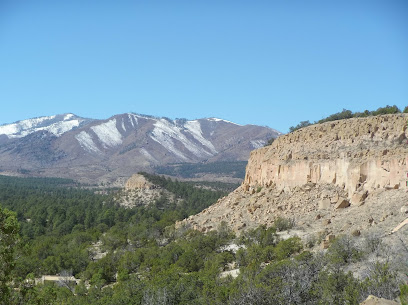
Kit Carson Home & Museum
Explore the rich history of the American West at the Kit Carson Home & Museum in Taos, NM, where the legacy of a legendary frontiersman comes to life.
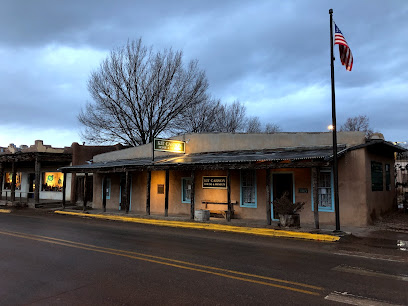
Unmissable attractions to see
Taos Pueblo
Experience the rich heritage and breathtaking beauty of Taos Pueblo, a living cultural landmark steeped in tradition.
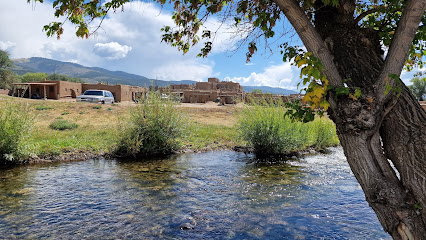
Río Grande del Norte National Monument
Discover the breathtaking landscapes and rich cultural history of Río Grande del Norte National Monument in New Mexico, perfect for hiking and exploration.

Kit Carson Park
Explore Kit Carson Park in Taos, NM - a tranquil escape blending natural beauty and cultural significance in the heart of the American Southwest.
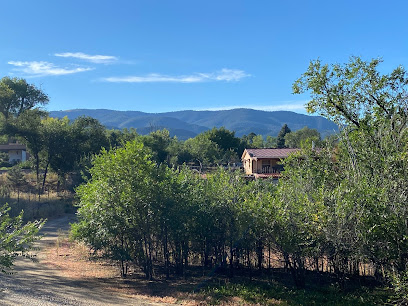
Ghost Ranch
Explore the stunning landscapes and rich history of Ghost Ranch, a cultural and artistic gem nestled in the heart of New Mexico's beautiful wilderness.

Kit Carson Home & Museum
Explore the life and legacy of Kit Carson at his historic home and museum in Taos, New Mexico, where frontier history comes alive.
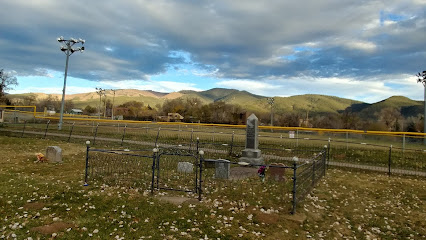
Ghost Ranch Education & Retreat Center
Experience the serene beauty and artistic inspiration of Ghost Ranch Education & Retreat Center in New Mexico's stunning landscapes.

Ghost Ranch
Experience the stunning landscapes, rich history, and artistic inspiration at Ghost Ranch in Abiquiu, New Mexico, a unique travel destination.
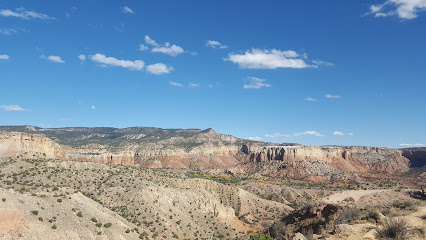
Echo Amphitheater
Explore Echo Amphitheater, a stunning natural wonder in New Mexico known for its unique acoustics and breathtaking landscapes, perfect for outdoor enthusiasts.
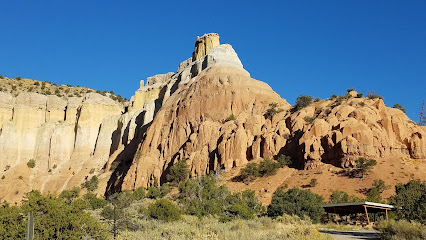
The O'Keeffe: Welcome Center
Explore the artistic legacy of Georgia O'Keeffe at The O'Keeffe Welcome Center in Abiquiu, New Mexico, where nature and art intertwine beautifully.

Millicent Rogers Museum
Experience the vibrant art and culture of the Southwest at the Millicent Rogers Museum in El Prado, a must-visit destination for art enthusiasts.
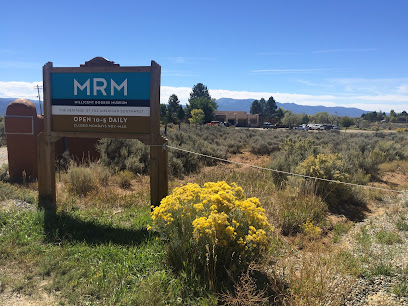
Plaza Blanca
Explore the breathtaking landscapes of Plaza Blanca, a hiking paradise in Abiquiu, New Mexico, with stunning rock formations and serene trails.
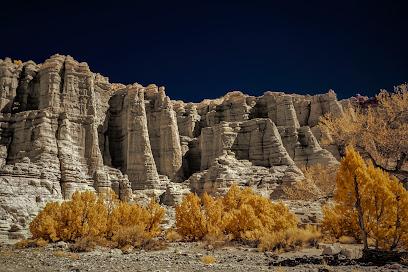
Hacienda de Los Martinez Museum
Discover the rich history and cultural heritage of Taos at the Hacienda de Los Martinez Museum, a must-visit for history enthusiasts.
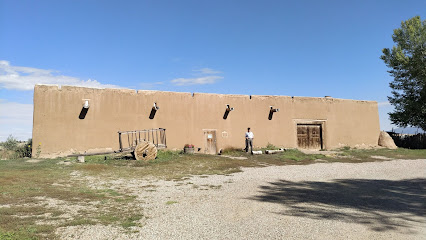
Purple Adobe Lavender Farm
Experience tranquility at Purple Adobe Lavender Farm, where vibrant lavender fields meet New Mexico's stunning landscapes for a perfect getaway.
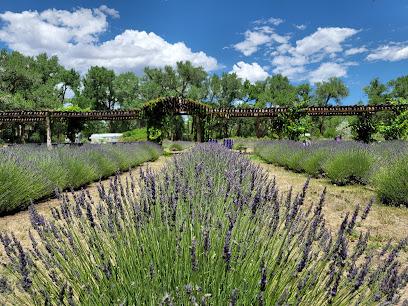
Hlauuma (North House) of Taos Pueblo
Explore the historical significance and cultural richness of Hlauuma (North House) in Taos Pueblo, a UNESCO World Heritage Site.
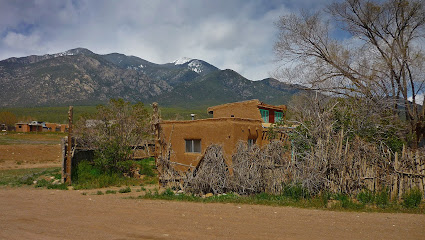
Couse-Sharp Historic Site
Explore the Couse-Sharp Historic Site in Taos, NM, and immerse yourself in the captivating world of American art and history.
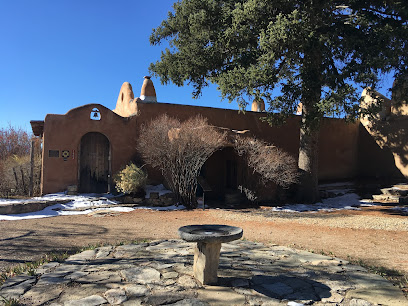
Essential places to dine
Rancho de Chimayó
Experience authentic Southwestern cuisine at Rancho de Chimayó - where tradition meets flavor in every dish.
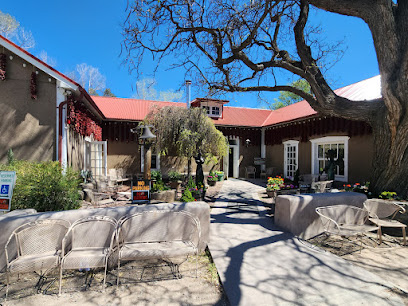
Michael's Kitchen Restaurant & Bakery
Experience authentic Southwestern American cuisine at Michael's Kitchen Restaurant & Bakery in Taos – where every meal is a celebration of local flavors.
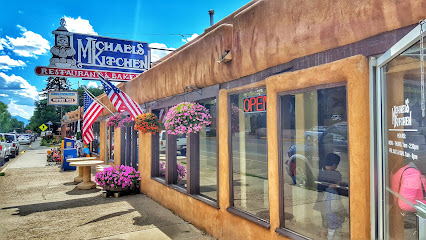
La Cueva Cafe
Experience authentic Mexican cuisine at La Cueva Cafe in Taos - where every meal is a celebration of flavor and culture.

The Burger Stand @ Taos Ale House
Experience delicious burgers and local craft beers at The Burger Stand @ Taos Ale House – a top destination for food lovers in Taos.
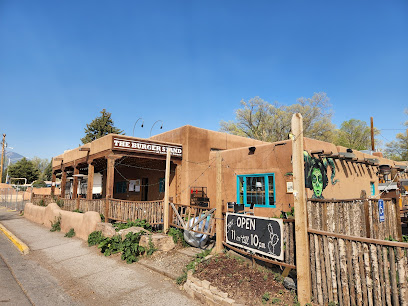
Antonio's The Taste of Mexico
Savor authentic Mexican cuisine at Antonio's The Taste of Mexico in Taos - where vibrant flavors meet warm hospitality.

The Gorge Bar and Grill
Experience authentic Southwestern flavors at The Gorge Bar and Grill in Taos—where delicious grilled dishes meet breathtaking views.
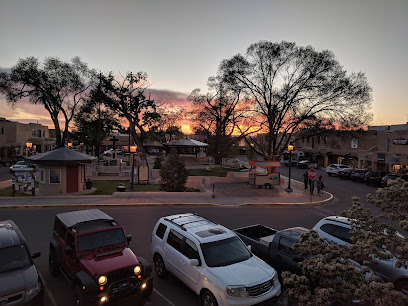
Farmhouse Cafe and Bakery
Discover culinary delights at Farmhouse Cafe & Bakery in El Prado - where fresh ingredients meet New Mexican charm.
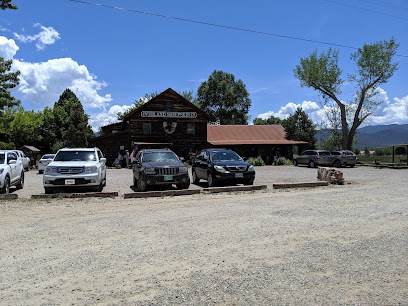
Blake's Lotaburger
Discover Blake's Lotaburger in Taos: A quintessential American burger experience infused with local flavors from New Mexico.

Shotgun Willie's
Discover hearty meals and warm hospitality at Shotgun Willie's, your go-to spot in scenic Red River, New Mexico.
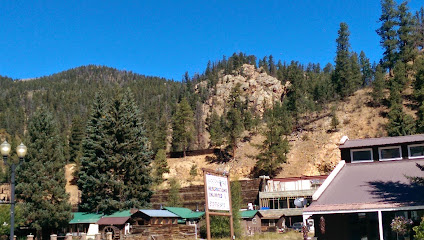
The Love Apple
Discover exquisite Southwestern American cuisine at The Love Apple in Taos, where organic ingredients meet culinary creativity.
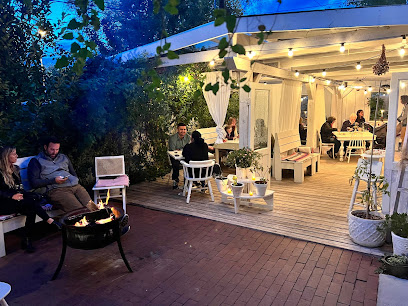
Ranchos Plaza Grill
Discover authentic Mexican flavors at Ranchos Plaza Grill in Ranchos De Taos—where every dish tells a story.
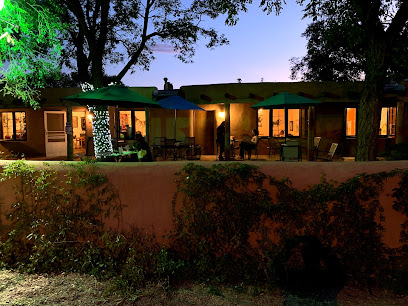
Medley.
Experience the essence of American cuisine at Medley in El Prado, where local flavors meet culinary creativity in a warm and inviting atmosphere.
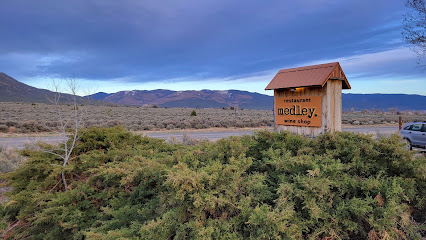
The Bavarian Restaurant
Savor authentic Bavarian flavors in the heart of Taos Ski Valley – perfect for après-ski dining.
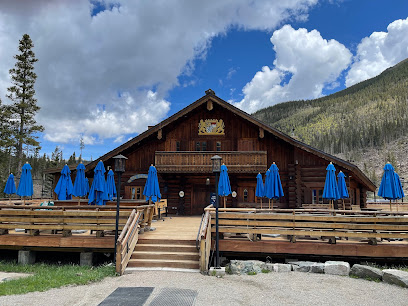
ACEQ
Experience exquisite American cuisine at ACEQ in Arroyo Seco, where local ingredients meet culinary artistry amidst breathtaking mountain views.
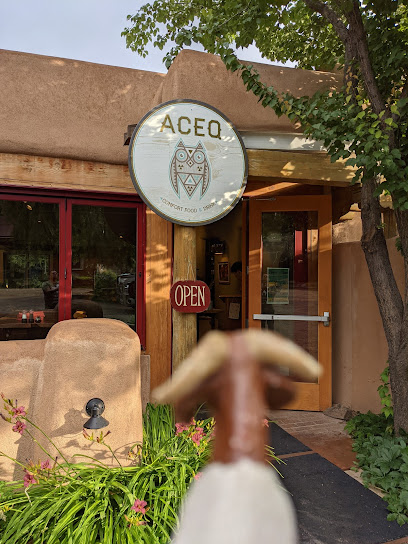
Chili Line Depot
Discover authentic New Mexican cuisine at Chili Line Depot while enjoying stunning views and cozy accommodations in Tres Piedras.
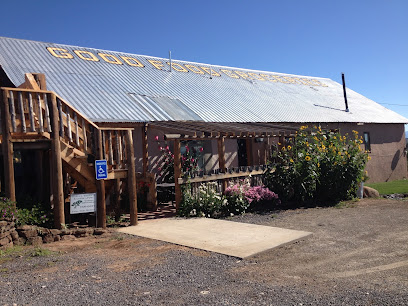
Essential bars & hidden hideouts
The Burger Stand @ Taos Ale House
Experience the best of Taos with delicious burgers, local beers, and a warm atmosphere at The Burger Stand @ Taos Ale House.
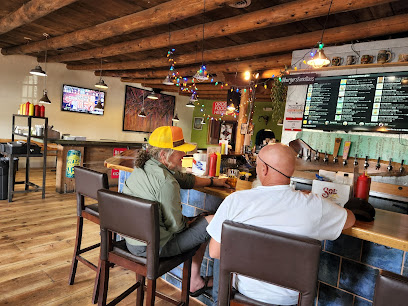
The Alley Cantina
Experience the vibrant flavors of American and Mexican cuisine at The Alley Cantina in Taos, NM, complete with live music and a family-friendly atmosphere.
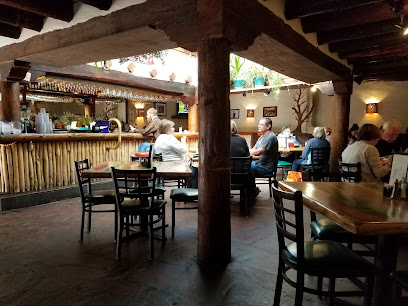
The Gorge Bar and Grill
Discover the flavors of Taos at The Gorge Bar and Grill, where local cuisine meets a welcoming atmosphere in the heart of New Mexico.
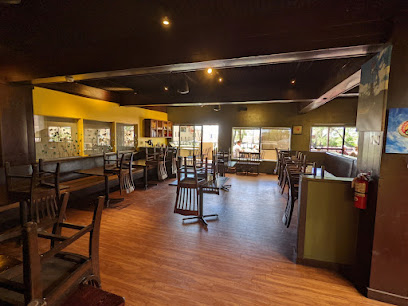
Taos Mesa Brewing Taos Tap Room
Discover the flavors of Taos at Taos Mesa Brewing Taos Tap Room, where craft beer meets delicious Italian cuisine in a vibrant atmosphere.
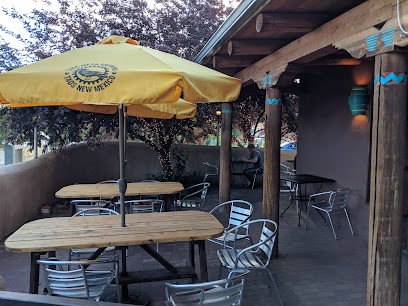
Bull O' the Woods Saloon
Discover the lively Bull O' the Woods Saloon in Red River, NM - where great drinks, delicious food, and entertainment come together in a warm and inviting atmosphere.
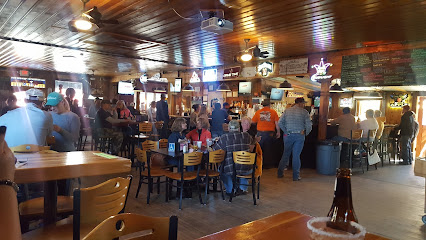
Adobe Bar
Discover Adobe Bar in Taos: a lively spot for cocktails, New Mexican flavors, and vibrant local culture.
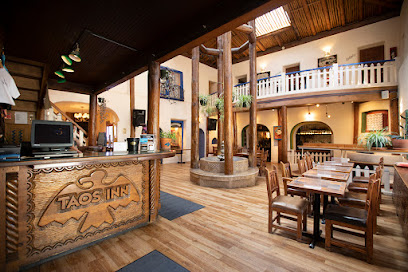
Taos Mesa Brewing
Discover the rich flavors of craft beer in a stunning New Mexico setting at Taos Mesa Brewing, where local culture meets exceptional brewing.
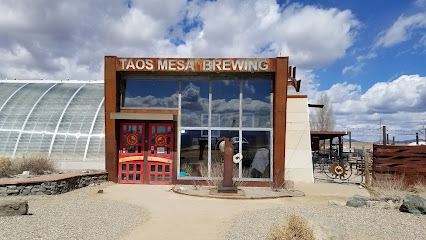
The Lounge by Rolling Still Distillery
Experience the essence of Taos at The Lounge by Rolling Still Distillery, where craft cocktails and local flavors unite in a cozy setting.
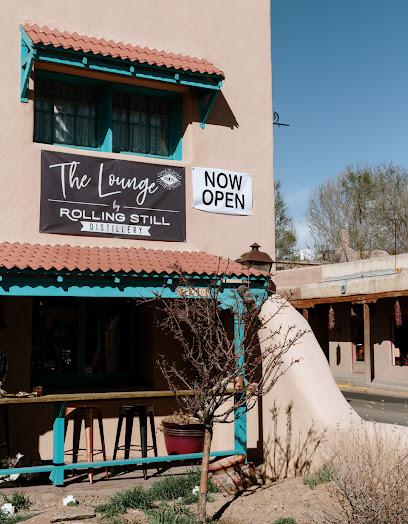
575 Sports & Co.
Discover the energetic vibe of 575 Sports & Co., Taos' favorite sports bar, where great food and sports unite in a friendly atmosphere.
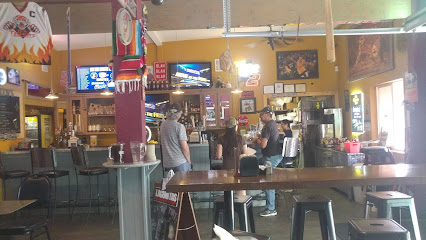
192 at The Blake
Discover the perfect blend of comfort and cuisine at 192 at The Blake, Taos Ski Valley's charming American restaurant and bar.
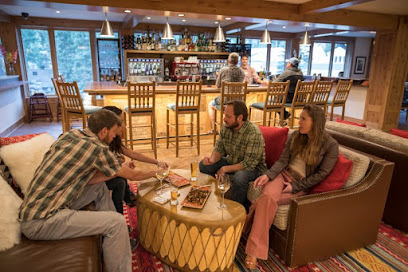
Motherlode Saloon
Experience the lively ambiance and delicious drinks at Motherlode Saloon in Red River, NM, the perfect spot to unwind after your adventures.

Corner Office Natural Wine Bar
Discover the unique flavors of natural wines in an inviting atmosphere at Taos' Corner Office Natural Wine Bar, perfect for relaxation and exploration.
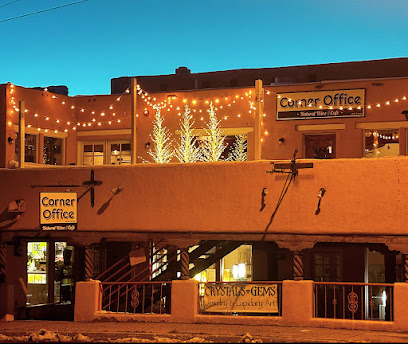
The Phoenix Grill
Experience delicious grilled dishes in a cozy atmosphere at The Phoenix Grill, your go-to dining spot in Taos Ski Valley, New Mexico.
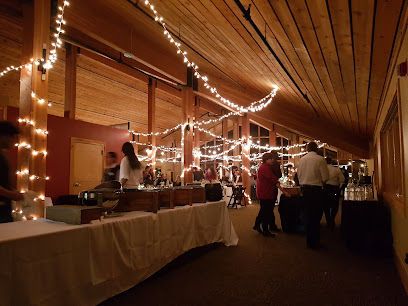
The Stakeout
Experience the vibrant atmosphere, delicious cuisine, and stunning views at The Stakeout in Ranchos De Taos, New Mexico.
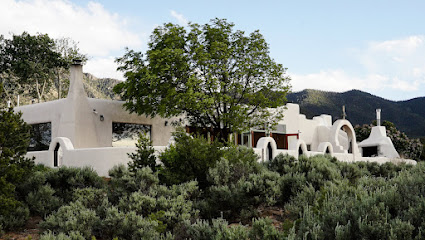
Anaconda Bar
Discover the vibrant Anaconda Bar in Taos, where expertly crafted cocktails and a warm atmosphere await you for a memorable nightlife experience.
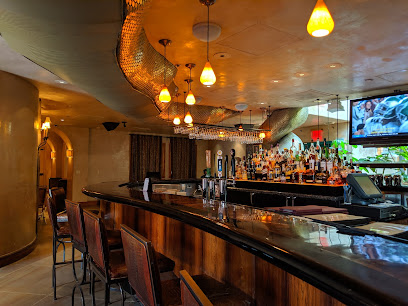
Local Phrases about Carson National Forest
-
- HelloHowdy
[hah-dee] - GoodbyeAdios
[ah-dee-ohs] - YesSi
[see] - NoNo
[noh] - Please/You're welcomePor favor
[por fah-vor] - Thank youGracias
[grah-see-ahs] - Excuse me/SorryDisculpe
[dees-kool-peh] - How are you?Como estas?
[ko-moh ehs-tahs] - Fine. And you?Bien. Y tu?
[bee-en. ee too] - Do you speak English?Hablas ingles?
[ah-blahs een-glays] - I don't understandNo entiendo
[noh ehn-tee-ehn-doh]
- HelloHowdy
-
- I'd like to see the menu, pleaseMe gustaría ver el menú, por favor
[meh goo-stah-ree-ah behr ehl meh-noo, por fah-vor] - I don't eat meatNo como carne
[noh koh-moh kahr-neh] - Cheers!Salud!
[sah-loohd] - I would like to pay, pleaseMe gustaría pagar, por favor
[meh goo-stah-ree-ah pah-gahr, por fah-vor]
- I'd like to see the menu, pleaseMe gustaría ver el menú, por favor
-
- Help!Ayuda!
[ah-yoo-dah] - Go away!Vete!
[veh-teh] - Call the Police!Llama a la policía!
[yah-mah ah lah poh-lee-see-ah] - Call a doctor!Llama a un doctor!
[yah-mah ah oon dohk-tohr] - I'm lostEstoy perdido
[ehs-toy pehr-dee-doh] - I'm illEstoy enfermo
[ehs-toy ehn-fehr-moh]
- Help!Ayuda!
-
- I'd like to buy...Quisiera comprar...
[kee-see-eh-rah kohm-prahr] - I'm just lookingSolo estoy mirando
[soh-loh ehs-toy mee-rahn-doh] - How much is it?Cuánto cuesta?
[kwan-toh kweh-stah] - That's too expensiveEsto es demasiado caro
[ehs-toh ehs deh-mah-syah-doh kah-roh] - Can you lower the price?Puede bajar el precio?
[pweh-deh bah-hahr ehl preh-syoh]
- I'd like to buy...Quisiera comprar...
-
- What time is it?Qué hora es?
[keh oh-rah ehs] - It's one o'clockEs la una
[ehs lah oo-nah] - Half past (10)Media (10)
[meh-dee-ah (diez)] - MorningMañana
[mah-nyah-nah] - AfternoonTarde
[tahr-deh] - EveningNoche
[noh-cheh] - YesterdayAyer
[ah-yehr] - TodayHoy
[oy] - TomorrowMañana
[mah-nyah-nah] - 1Uno
[oo-noh] - 2Dos
[dohs] - 3Tres
[trehs] - 4Cuatro
[kwah-troh] - 5Cinco
[seen-koh] - 6Seis
[sehs] - 7Siete
[syeh-teh] - 8Ocho
[oh-choh] - 9Nueve
[nweh-veh] - 10Diez
[diez]
- What time is it?Qué hora es?
-
- Where's a/the...?Dónde está el/la...?
[dohn-deh ehs-tah ehl/lah] - What's the address?Cuál es la dirección?
[kwal ehs lah dee-rehk-syon] - Can you show me (on the map)?Puedes mostrarme (en el mapa)?
[pweh-dehs mohs-trar-meh (ehn ehl mah-pah)] - When's the next (bus)?Cuándo es el próximo (autobús)?
[kwan-doh ehs ehl proh-ksee-moh (ow-toh-boos)] - A ticket (to ....)Un boleto (a ....)
[oon boh-leh-toh (ah)]
- Where's a/the...?Dónde está el/la...?
History of Carson National Forest
-
Long before Carson National Forest was established, the region was home to ancient Native American cultures. Archaeological evidence, including petroglyphs and ruins, reveals that the Ancestral Puebloans and other indigenous peoples lived in the area for thousands of years. Their presence is immortalized in the artifacts and cliff dwellings that still dot the landscape.
-
In the late 16th century, Spanish explorers ventured into what is now New Mexico. The area that encompasses Carson National Forest was part of the vast territory claimed by Spain. Spanish colonization brought new cultural influences, including the introduction of Christianity, livestock, and European agricultural practices. The legacy of this era is evident in the region's place names and historic missions.
-
One of the most significant historical sites near Carson National Forest is Taos Pueblo, a UNESCO World Heritage Site. This ancient pueblo has been continuously inhabited for over 1,000 years and remains a vital center of Native American culture. The multi-storied adobe buildings and the traditions of the Taos people offer a glimpse into the rich history and enduring spirit of the indigenous population.
-
The 19th century brought significant changes to the region as American settlers moved westward. The U.S. acquisition of New Mexico following the Mexican-American War in 1848 marked a new chapter in the area's history. The forested landscape of what would become Carson National Forest witnessed the arrival of ranchers, miners, and loggers, each leaving their mark on the land.
-
Carson National Forest was officially established in 1908, named in honor of the famous frontiersman and scout Kit Carson. The creation of the forest was part of a broader movement to conserve natural resources and protect public lands for future generations. The forest's diverse ecosystems, from alpine meadows to arid deserts, were recognized as valuable national treasures.
-
During the Great Depression, the Civilian Conservation Corps (CCC) played a crucial role in developing infrastructure within Carson National Forest. The CCC built trails, campgrounds, and structures that are still in use today. Their efforts not only provided employment during a time of economic hardship but also helped to preserve and enhance the forest's natural beauty.
-
Carson National Forest continues to be a place where history and culture converge. It serves as a living museum of the region's past, from ancient Native American heritage to the influences of Spanish and American settlers. The forest is a popular destination for outdoor enthusiasts, artists, and those seeking to connect with the rich tapestry of New Mexico's history and natural splendor.
Carson National Forest Essentials
-
Carson National Forest is located in northern New Mexico. The nearest major airport is Albuquerque International Sunport (ABQ), approximately 150 miles away. From Albuquerque, you can rent a car or take a shuttle service to reach the forest. The drive typically takes around 3 hours. Alternatively, you can fly into Santa Fe Regional Airport (SAF), which is closer, about 85 miles away, and then drive for around 1.5 hours to the forest. Public transit options are limited, so renting a car is highly recommended.
-
Within Carson National Forest, the most convenient way to get around is by car. The forest covers a large area, and many of the attractions are spread out. There are several scenic byways and forest roads that provide access to different areas. If you prefer not to drive, some local tour operators offer guided tours. Biking and hiking are also popular ways to explore the forest, but be prepared for rugged terrain in some areas.
-
The official currency in the United States is the US Dollar (USD). Credit and debit cards are widely accepted in towns and at larger facilities within the forest. However, some remote areas and smaller vendors might only accept cash, so it's a good idea to carry some with you. ATMs are available in nearby towns such as Taos and Red River.
-
Carson National Forest is generally safe for visitors, but it's important to take standard precautions. Be aware of your surroundings, especially when hiking or camping in remote areas. Wildlife encounters are possible, so familiarize yourself with safety guidelines for bears and other animals. Crime rates are low, but it's always best to secure your belongings and avoid leaving valuables in your car. There are no specific high-crime areas targeting tourists, but staying vigilant is always a good practice.
-
In case of emergency, dial 911 for immediate assistance. Cell phone reception can be spotty in remote areas of the forest, so it's advisable to have a map and a basic first aid kit. The nearest hospitals are in Taos and Española. For minor medical issues, local clinics and pharmacies are available in towns near the forest. Always inform someone of your travel plans and expected return time when venturing into remote areas.
-
Fashion: Do wear comfortable and weather-appropriate clothing. Layering is recommended due to variable weather conditions. Avoid overly revealing clothing. Religion: Do be respectful of local customs and traditions, especially when visiting Native American sites. Public Transport: Do plan your transportation in advance as public transit options are limited. Renting a car is the best option. Don't rely solely on public transport to get around. Greetings: Do greet people with a friendly 'hello' or 'hi'. A handshake is common in more formal settings. Eating & Drinking: Do try local New Mexican cuisine, such as green chile dishes. Don't litter; always pack out what you pack in.
-
To experience Carson National Forest like a local, consider visiting during the shoulder seasons of late spring or early fall to avoid crowds. Engage with local rangers and staff, as they can provide valuable insights and tips. Attend local events or festivals in nearby towns like Taos Pueblo or the Red River's Oktoberfest. For a unique experience, hike the Wheeler Peak, the highest point in New Mexico, or explore the Enchanted Circle Scenic Byway for breathtaking views.
Trending Landmarks in Carson National Forest
-
White Sands National Park
-
Carlsbad Caverns National Park
-
Bandelier National Monument
-
Kasha-Katuwe Tent Rocks National Monument
-
Bandelier National Monument Visitor Center
-
Río Grande del Norte National Monument
-
Valles Caldera National Preserve
-
Gila Cliff Dwellings National Monument
-
Cimarron Canyon State Park
-
Sky City Cultural Center & Haak'u Museum
-
Lincoln Historic Site
-
Kit Carson Park
-
Jemez Historic Site
-
Puye Cliff Dwellings
-
Kit Carson Home & Museum
Nearby Cities to Carson National Forest
-
Things To Do in Los Alamos
-
Things To Do in Santa Fe
-
Things To Do in Sante Fe
-
Things To Do in Pagosa Springs
-
Things To Do in Alamosa
-
Things To Do in Bernalillo
-
Things To Do in Las Vegas
-
Things To Do in Albuquerque
-
Things To Do in Durango
-
Things To Do in Trinidad
-
Things To Do in Farmington
-
Things To Do in Ouray
-
Things To Do in Salida
-
Things To Do in Canon City
-
Things To Do in Gunnison


